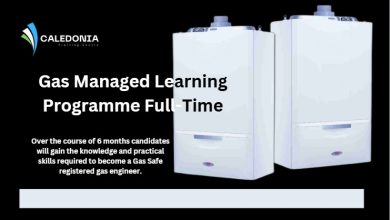In today’s competitive business landscape, managing human resources efficiently is crucial for the success of any organization. Human Resource Management Systems (HRMS) integrated with payroll functionalities have emerged as essential tools to streamline HR processes and ensure seamless payroll management. Combining the power of HRMS with payroll not only saves time but also enhances accuracy, compliance, and employee satisfaction.
What Is HRMS with Payroll?
HRMS with payroll refers to a comprehensive software solution that automates and simplifies human resources tasks while also handling payroll management. This dual-purpose platform helps organizations manage employee data, track attendance, handle leave requests, and process payroll, all within a single system. By integrating payroll into an HRMS, companies can eliminate redundant processes, avoid manual errors, and improve overall efficiency.
Why Is HRMS with Payroll Important?
Streamlined Operations: One of the main advantages of HRMS with payroll is the ability to consolidate all HR and payroll functions into a single platform. This integration allows for the seamless flow of information between HR and payroll departments, reducing the need for repetitive data entry and minimizing human error.
Enhanced Accuracy: Payroll processing involves a lot of sensitive calculations, including tax deductions, employee benefits, overtime pay, and bonuses. An integrated HRMS with payroll ensures these calculations are automated and error-free, thereby avoiding costly mistakes and ensuring employees are paid accurately and on time.
Compliance and Reporting: Managing payroll also means adhering to various regulatory requirements, including tax filings and labor laws. HRMS with payroll systems are designed to keep up with changing laws and regulations, ensuring that organizations stay compliant. These systems also generate accurate reports for auditing and legal purposes, reducing the risk of penalties due to non-compliance.
Improved Employee Experience: Employees appreciate timely and accurate paychecks, and an HRMS with payroll helps deliver just that. Additionally, these systems often provide self-service portals, allowing employees to access their pay stubs, tax documents, and benefits information at any time. This transparency boosts employee satisfaction and reduces the workload on HR teams.
Data Security: Payroll information is highly sensitive, and keeping it secure is critical. HRMS with payroll solutions offers advanced security features, including encryption and role-based access, ensuring that only authorized personnel can access sensitive employee information.
Key Features of HRMS with Payroll
Automated Payroll Processing: The core functionality of HRMS with payroll is the automation of payroll tasks. This includes calculating wages, taxes, and deductions, as well as generating payslips and direct deposit details. Automation reduces the administrative burden and ensures payroll is processed accurately and on time.
Attendance and Leave Management: HRMS with payroll systems track employee attendance and leave requests in real time. This feature ensures that payroll is accurately adjusted based on working hours, overtime, and leaves taken. It also simplifies the process of managing vacation balances and sick leaves.
Tax Management and Compliance: Staying compliant with tax laws is a key challenge for businesses, especially when regulations frequently change. HRMS with payroll is designed to automatically calculate taxes and update deductions based on the latest tax laws, ensuring the company remains compliant while avoiding fines and penalties.
Employee Self-Service Portal: Many HRMS with payroll systems offer a self-service portal where employees can view their payroll information, submit leave requests, and update personal details. This reduces the administrative workload on HR teams and empowers employees to take control of their data.
Customizable Reports: HRMS with payroll solutions provide customizable reporting options, allowing HR managers to generate detailed payroll reports, analyze trends, and gain insights into workforce costs. These reports are essential for decision-making and budgeting purposes.
How HRMS with Payroll Enhances Business Efficiency
Time Savings: Manual payroll processing can be time-consuming, especially for organizations with a large workforce. HRMS with payroll automates the entire process, freeing up valuable time for HR teams to focus on other strategic initiatives.
Reduced Errors: Manual data entry is prone to errors, and payroll mistakes can lead to employee dissatisfaction and legal issues. By automating payroll calculations through an HRMS, businesses can significantly reduce the risk of errors.
Cost Efficiency: While implementing an HRMS with payroll might seem like a significant investment upfront, it ultimately leads to cost savings by reducing administrative overhead, improving compliance, and eliminating the need for third-party payroll services.
Scalability: As businesses grow, managing payroll and HR functions can become increasingly complex. HRMS with payroll systems is scalable, allowing organizations to manage a growing workforce without compromising efficiency or accuracy.
Conclusion
In conclusion, integrating HRMS with payroll offers a wide range of benefits that help organizations improve efficiency, ensure compliance, and enhance the employee experience. By automating payroll tasks, tracking attendance, and providing self-service options, businesses can streamline their operations and reduce the administrative burden on HR teams.
Whether you’re a small business or a large enterprise, adopting HRMS with payroll is a smart investment that can lead to long-term success. It not only simplifies payroll management but also enhances the overall performance of your human resources department, allowing your organization to focus on growth and innovation.




